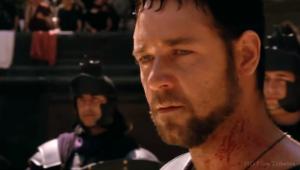A Tale of Power Loss and Surge Protection

The next morning a line of severe thunderstorms rolled past northwest Florida and rambled on through parts of other southeastern states. We even had a tornado watch, including a robo call from county authorities urging us to hunker down and look for the safest room in the house to flee to should the worst happen. The Weather Channel even had a warning that the first thing to do when a tornado approached was not to grab a camera and run outside to take a picture of it!
My area, with heavy rains, escaped the worst of it. But the night before, in a preview of coming attractions, a brief storm popped up. I was working on a calibration for an upcoming review, and when the thunder started to rumble I elected to push on through it, since a hard deadline was fast approaching. Bad move. We lost power for just an instant, but it was long enough for the projector under review to shut down, along with my computer and a half-finished calibration. Luckily the projector powered up again without incident and none the worse for the abuse (it employs lasers for its illumination, not a lamplamps are very sensitive to being shut off without a fan-driven cool-down period. I had also saved enough data from the calibration to enable a quick re-do. I waited a bit until the storm passed, then resumed my work, though it was already, and perhaps appropriately, well past the witching hour.
But all that got me thinking seriously about power conditioners and surge protectors, none of which I had in place. I do have an older, huge, and massively heavy UPS (uninterruptable power supply) from APC. But with its battery in need of replacement it currently serves simply as ballast for my projector shelfit’s heavier than many power amps!
But it’s doubtful if it would have helped. The projector, much like a lot of modern gear, has a relay that trips off immediately on sensing power loss and doesn’t re-engage when the power comes back on. The power loss was for less than a second, but I had to switch the projector and computer back on manually.
Surge protectors, and even UPSs, are a good idea, but they’re no panacea. Not even a whole houses surge protector is a guarantee. All of these precautions offer some protection against silent power surges that don’t make themselves known in any way, but over time can slowly degrade your electronic goodies. Such surges aren’t uncommon. Surge protectors might help with them and also protect against distant storms.
But regardless of advertising claims, nothing you can insert between the wall and your gear can protect it against possible damage from a close lightning strike. And even with your equipment switched off, damaging surges can get through. Its power switch merely opens a short gap that offers little protection; a surge can jump across it. There’s been a reported incident in which a powerful lightning strike jumped several feet across a room (with a visible flash) toward a grounded kitchen faucet! You can’t fool with mother nature.
Even unplugging your equipment isn’t a sure bet. I once heard if a satellite rocket launch being delayed for inspection due to a lightning strike on a nearby launching pad, even though the two pads weren’t physically connected.
Nevertheless, unplugging offers the best protection possible. Yes, it’s a nuisance, but whenever I’m out with possible stormy weather in the area, or away for a few days, I unplug everything I don’t want damaged.
I’ve often lived in areas prone to thunderstorms. When I lived in Santa Fe I quickly became aware that it’s one of the nation’s biggest lightning magnets. Ditto my current northwest Florida digsthough it’s the first place I’ve lived where thunderstorms are also possible in the winter (you expect winter storms in warm Miami, but not in the cool winters at the top of the state). Only during my time in warm, dry Southern California did I feel relatively immune to the risk; I can recall only one or two thunderstorms in my total of 18 years there, and never unplugged my gear for weather.
I recall that my boss in Santa Fe, the then owner of both Stereophile and the Stereophile Guide to Home Theater, once installed an industrial grade power shutoff system in his living/listening room. Along two adjoining walls was a large (factory-large, not Home Depot large) power strip. Along the strip were more than one (I don’t recall exactly how many) large shutoff switches consisting of a disc about 2-inches in diameter. If you mashed one of these discs with your fist you’d cut off power to the strip. I hope that the internal contacts that opened when you did this were at least an inch or two wide. Even that isn’t sufficient against the most aggressive gap-jumping surges, but it’s far better protection than the power switches in any audio/video gear!
























































